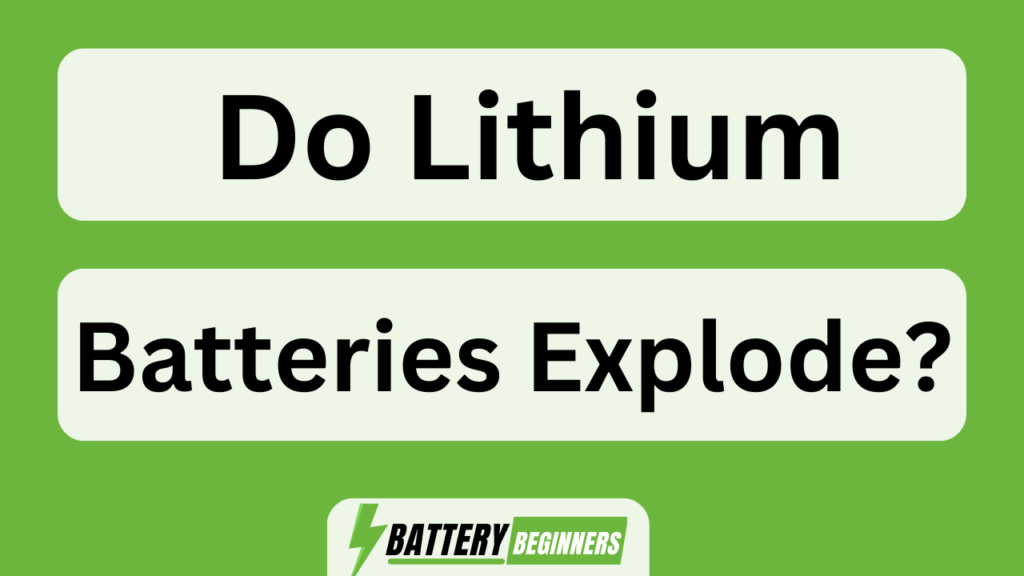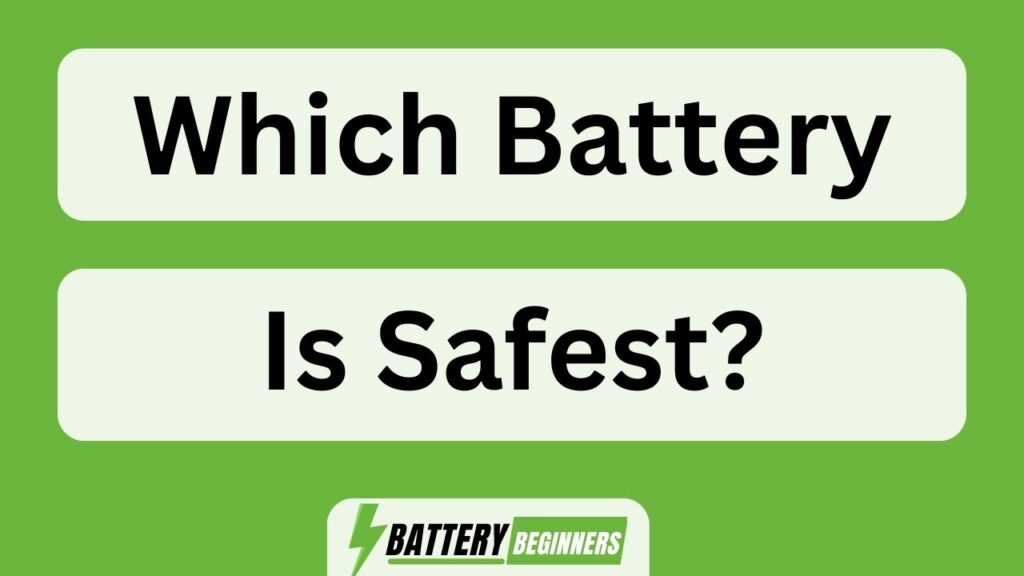Lithium batteries are widely used in electronic devices due to their high energy density and longer lifespan. However, encountering issues with charging can be frustrating and disruptive. In fact, studies show that approximately 20% of lithium battery failures are related to charging problems (Source: Battery University).Why My Lithium Battery Won’T Charge?
Understanding the reasons behind a non-charging lithium battery is crucial for troubleshooting and resolving the issue effectively. This article aims to provide a comprehensive guide on why your lithium battery may not be charging and offers practical solutions to address the problem.
From checking the power source and inspecting the charging cable to cleaning the charging port and updating device software, this article covers various troubleshooting steps that can help you overcome this issue.
Additionally, preventive maintenance tips are provided to ensure proper battery care and avoid common mistakes during charging. If all else fails, seeking professional assistance may be necessary.
Key Takeaways:Why My Lithium Battery Won’T Charge?
- Troubleshooting steps such as checking the power source, inspecting the charging cable, and cleaning the charging port can help resolve charging problems with lithium batteries.
- Restarting the device, updating the software, and resetting the settings can also fix common charging issues.
- If troubleshooting methods fail, replacing the battery may be necessary, and seeking professional help is recommended for complex charging issues.
- Implementing preventive maintenance measures, such as storing the battery properly, avoiding overcharging or discharging, regularly inspecting for damage, and cleaning battery terminals, is crucial for optimal battery performance and longevity.
Check the Power Source
The first step in troubleshooting a lithium battery that won’t charge is to verify the functionality of the power source. This is crucial as a faulty power source can often lead to charging issues.
To do this, start by checking if the power outlet or USB port is working correctly. Ensure that it is providing a stable and adequate power supply by using another device or testing equipment. Additionally, inspect any surge protectors or extension cords that may be used in the charging process.
Troubleshooting steps such as these can help identify common charging issues related to the power source.
Once you have verified the functionality of the power source, you can proceed to inspecting the charging cable for any potential problems.
Inspect the Charging Cable
Inspect the charging cable carefully to check for any signs of damage or degradation. Check for damages such as frayed wires, exposed metal, or bent connectors. Damaged cables can prevent the proper flow of electricity and result in a lithium battery not charging.
Additionally, ensure that the charging cable is compatible with your device. Some devices require specific cables with certain voltage and current ratings. Check for compatibility by verifying that the cable fits securely into both the power source and your device’s charging port. A loose connection can hinder the charging process.
Once you have inspected the charging cable thoroughly, you can move on to cleaning the charging port to further troubleshoot why your lithium battery won’t charge without damaging it.
Clean the Charging Port
To address the issue of a non-functioning charging cable, it is essential to clean the charging port meticulously, ensuring its optimal performance. Cleaning the charging port can help troubleshoot common charging issues and restore the functionality of the lithium battery. Dust, debris, or lint may accumulate over time in the port, obstructing proper connection between the cable and the device. By using compressed air or a small brush, gently remove any foreign particles from the charging port. It is important to avoid using sharp objects that could damage the delicate components inside. Additionally, inspecting for any signs of corrosion or damage is crucial as well. Once you have cleaned and inspected the charging port thoroughly, proceed to restart your device for further troubleshooting.
| Troubleshooting Tips | Common Charging Issues |
|---|---|
| Clean charging port | Slow or no charge |
| Remove dust/debris | Intermittent charging |
| Inspect for damage | Inconsistent battery life |
Transition: After cleaning and inspecting your device’s charging port, it is recommended to proceed with restarting your device for additional troubleshooting steps.
Restart Your Device
After completing the meticulous cleaning and inspection of the charging port, it is advantageous to proceed with a device restart in order to further troubleshoot any potential issues. Restarting your device can often resolve common charging issues and provide additional troubleshooting tips. Here are four steps to restart your device:
- Hold down the power button until a prompt appears on the screen.
- Select the option to restart your device from the prompt.
- Wait for your device to shut down completely before turning it back on.
- Once restarted, check if the battery is charging properly.
Restarting your device helps refresh its software and can potentially resolve any temporary glitches that may be causing charging problems.
To address other possible causes of a non-charging lithium battery, it is recommended to update your device software next in order to ensure optimal performance and compatibility with charging protocols.
Update Your Device Software
Updating your device software is an essential step in troubleshooting charging issues and ensuring optimal performance and compatibility with charging protocols. Software updates often include bug fixes, security enhancements, and improvements to the charging system. By updating your device software, you can address any underlying software-related issues that may be preventing your lithium battery from charging properly.
To update the software on your device, navigate to the settings menu and look for the ‘Software Update’ or ‘System Update’ option. Tap on it to check for available updates and follow the on-screen instructions to download and install them. It is advisable to connect your device to a stable Wi-Fi network before initiating the update process.
Updating your device software can potentially resolve any compatibility issues between your lithium battery and the operating system.
Once you have completed this troubleshooting step, you can proceed to reset your device settings for further investigation into why your battery won’t charge efficiently.
Reset Your Device Settings
After updating your device software, if you are still facing issues with your lithium battery not charging, another troubleshooting tip is to reset your device settings.
Resetting the settings can help resolve common issues that may be preventing the battery from charging properly.
To reset your device settings, go to the Settings menu and look for the option to reset or restore your device. This will revert the settings back to their default state, eliminating any potential software glitches or conflicts that could be affecting the battery charging process.
Once you have successfully reset your device settings and if the issue persists, it may indicate a more serious problem with the battery itself. In such cases, it might be necessary to replace the battery altogether.
Replace the Battery
Replacing the battery becomes an inevitable course of action when all troubleshooting methods fail to resolve the persistent charging issue with your device.
In such cases, it is crucial to understand the intricacies involved in battery replacement and consider a few key factors.
Firstly, ensure compatibility by obtaining a battery specifically designed for your device model.
Secondly, take into account the battery lifespan as lithium batteries tend to degrade over time and may require replacement after a certain period.
Lastly, follow precise instructions provided by the manufacturer or seek professional guidance to execute a successful battery replacement.
By understanding these aspects and carefully replacing the faulty battery, you can potentially overcome charging issues and restore optimal functionality to your device.
Transitioning into seeking professional help for more complex concerns will further assist in resolving any persisting problems effectively.
Seek Professional Help
To address more complex concerns and ensure the effective resolution of persisting problems, it is advisable to seek professional assistance.
When troubleshooting issues with a lithium battery that won’t charge, it is important to consider that the problem may not be as simple as replacing the battery. Professionals have the expertise and tools necessary to accurately diagnose and fix underlying issues that may be preventing proper charging.
They can perform advanced tests to determine if there are any faults in the battery management system or other components related to charging.
Moreover, seeking professional help can also provide valuable insights into extending the overall lifespan of the battery through preventive maintenance tips. By regularly following these tips, users can maximize their batteries’ performance and avoid potential charging difficulties in the future without requiring further intervention.
Preventive Maintenance Tips
Implementing preventive maintenance measures is crucial to ensure optimal performance and longevity of lithium batteries. To maximize battery storage, it is important to store lithium batteries in a cool, dry place away from direct sunlight or extreme temperatures.
Additionally, avoiding overcharging or completely discharging the battery can significantly extend its lifespan. Regularly inspecting the battery for any signs of damage, such as bulging or leaking, is essential in identifying potential issues early on.
Furthermore, cleaning the battery terminals with a soft cloth and ensuring they are free from dust or debris can help maintain proper connectivity. By following these preventive maintenance tips, users can enhance the overall efficiency and durability of their lithium batteries.
Transition: To further optimize battery performance, it is important to avoid common mistakes in charging…
Avoid Common Mistakes in Charging
To ensure the longevity and optimal performance of your lithium battery, it is crucial to avoid common mistakes during the charging process. By adhering to proper charging protocols, you can prevent potential issues that may hinder your battery’s ability to charge effectively.
Troubleshooting tips are essential in identifying and resolving problems associated with charging. Some common mistakes include using an incorrect charger or cable, exposing the battery to extreme temperatures, or overcharging it. These errors can lead to reduced charging efficiency and even irreversible damage to the battery cells.
Additionally, understanding the recommended charging time for your specific lithium battery is vital. Charging for too long or not enough can impact its overall lifespan and capacity.
By following these guidelines and troubleshooting tips, you can optimize the charging process of your lithium battery and maximize its performance.
Frequently Asked Questions
What are some common mistakes that people make when charging their lithium batteries?
One common mistake people make when charging lithium batteries is overcharging, which can lead to safety risks. To avoid this, it is important to use optimal charging techniques that ensure the battery is charged within its recommended voltage limits.
How often should I perform preventive maintenance on my lithium battery?
Performing regular preventive maintenance on a lithium battery is crucial for optimal performance and longevity. It helps in ensuring proper storage of the battery, preventing potential issues, maximizing efficiency, and extending its overall lifespan.
Can I use any type of charging cable to charge my lithium battery?
The compatibility of charging cables is crucial for efficient lithium battery charging methods. It is important to choose the appropriate cable that matches the battery’s specifications to ensure a safe and effective charging process.
Is it safe to restart my device while it is charging?
Restarting a device while it is charging may pose safety risks and can potentially damage the battery. It is advised to avoid this practice as it may interfere with the charging process and compromise the compatibility of the charging cable.
What are some signs that indicate my lithium battery needs to be replaced?
Signs that indicate the need to replace a lithium battery include decreased battery life, difficulty in charging or holding a charge, increased heat production, and physical damage such as bulging or leaking. Troubleshooting methods can also help identify issues with lithium battery charging.
Conclusion
After examining various potential causes, it is evident that there are several reasons why a lithium battery may not charge. These include issues with the power source, charging cable, and charging port.
Restarting the device and updating its software can also help resolve the problem. In some cases, replacing the battery might be necessary, while seeking professional assistance is recommended for complex situations.
By following preventive maintenance tips and avoiding common mistakes in charging, users can ensure optimal battery performance and longevity.




